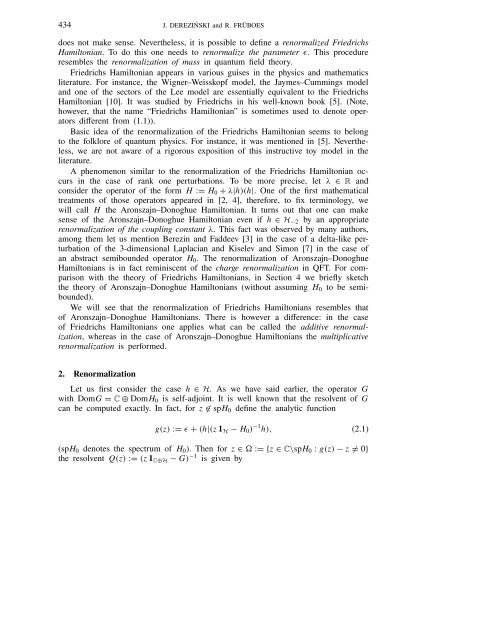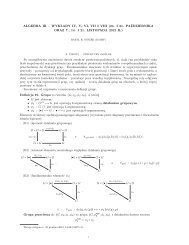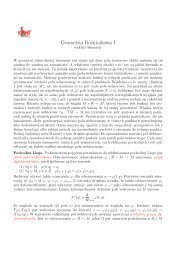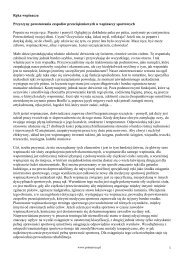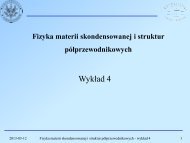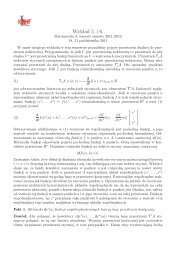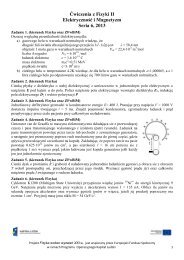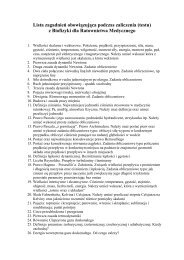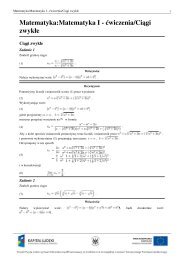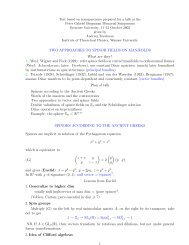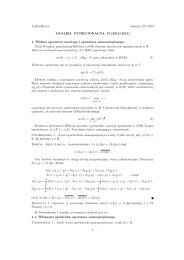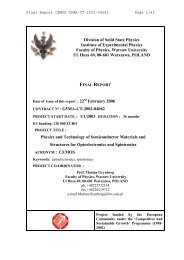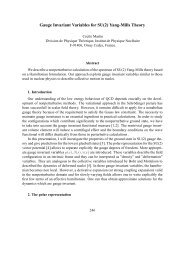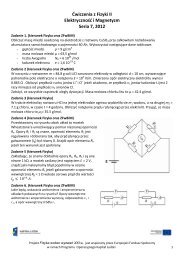RENORMALIZATION OF THE FRIEDRICHS HAMILTONIAN 1 ...
RENORMALIZATION OF THE FRIEDRICHS HAMILTONIAN 1 ...
RENORMALIZATION OF THE FRIEDRICHS HAMILTONIAN 1 ...
You also want an ePaper? Increase the reach of your titles
YUMPU automatically turns print PDFs into web optimized ePapers that Google loves.
434 J. DEREZIŃSKI and R. FRÜBOES<br />
does not make sense. Nevertheless, it is possible to define a renormalized Friedrichs<br />
Hamiltonian. To do this one needs to renormalize the parameter ɛ. This procedure<br />
resembles the renormalization of mass in quantum field theory.<br />
Friedrichs Hamiltonian appears in various guises in the physics and mathematics<br />
literature. For instance, the Wigner–Weisskopf model, the Jaymes–Cummings model<br />
and one of the sectors of the Lee model are essentially equivalent to the Friedrichs<br />
Hamiltonian [10]. It was studied by Friedrichs in his well-known book [5]. (Note,<br />
however, that the name “Friedrichs Hamiltonian” is sometimes used to denote operators<br />
different from (1.1)).<br />
Basic idea of the renormalization of the Friedrichs Hamiltonian seems to belong<br />
to the folklore of quantum physics. For instance, it was mentioned in [5]. Nevertheless,<br />
we are not aware of a rigorous exposition of this instructive toy model in the<br />
literature.<br />
A phenomenon similar to the renormalization of the Friedrichs Hamiltonian occurs<br />
in the case of rank one perturbations. To be more precise, let λ ∈ R and<br />
consider the operator of the form H := H 0 + λ|h)(h|. One of the first mathematical<br />
treatments of those operators appeared in [2, 4], therefore, to fix terminology, we<br />
will call H the Aronszajn–Donoghue Hamiltonian. It turns out that one can make<br />
sense of the Aronszajn–Donoghue Hamiltonian even if h ∈ H −2 by an appropriate<br />
renormalization of the coupling constant λ. This fact was observed by many authors,<br />
among them let us mention Berezin and Faddeev [3] in the case of a delta-like perturbation<br />
of the 3-dimensional Laplacian and Kiselev and Simon [7] in the case of<br />
an abstract semibounded operator H 0 . The renormalization of Aronszajn–Donoghue<br />
Hamiltonians is in fact reminiscent of the charge renormalization in QFT. For comparison<br />
with the theory of Friedrichs Hamiltonians, in Section 4 we briefly sketch<br />
the theory of Aronszajn–Donoghue Hamiltonians (without assuming H 0 to be semibounded).<br />
We will see that the renormalization of Friedrichs Hamiltonians resembles that<br />
of Aronszajn–Donoghue Hamiltonians. There is however a difference: in the case<br />
of Friedrichs Hamiltonians one applies what can be called the additive renormalization,<br />
whereas in the case of Aronszajn–Donoghue Hamiltonians the multiplicative<br />
renormalization is performed.<br />
2. Renormalization<br />
Let us first consider the case h ∈ H. As we have said earlier, the operator G<br />
with DomG = C ⊕ DomH 0 is self-adjoint. It is well known that the resolvent of G<br />
can be computed exactly. In fact, for z ∉ spH 0 define the analytic function<br />
g(z) := ɛ + (h|(z 1 H − H 0 ) −1 h), (2.1)<br />
(spH 0 denotes the spectrum of H 0 ). Then for z ∈ := {z ∈ C\spH 0 : g(z) − z ≠ 0}<br />
the resolvent Q(z) := (z 1 C⊕H − G) −1 is given by


